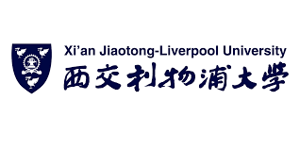As students make the transition from school to university, they are faced with common challenges. However, it is important to recognize that they are a diverse group, each with their own unique needs and aspirations. The importance of catering to these individual requirements in order to truly understand and enhance the higher education experience can not be underestimated. This is where technology plays a crucial role, serving as the central hub of knowledge and facilitating personalized learning experiences.
Technology
Regardless of the size or level of the institution, embracing technology is essential. It empowers educators to keep pace with their students, not only in terms of subject knowledge and teaching methods, but also in terms of how content is consumed. Today's students are accustomed to digital resources, blended/hybrid learning models, and flexibility. This is the only way of learning they know, and they have come to rely on it without any alternative to fall back on.
Looking ahead, it is clear that the demand for innovation in higher education will only continue to grow. We don't need another pandemic to drive this wave of innovation; incoming students themselves will demand it. They are a tech-savvy generation, accustomed to seamless integration of technology in all aspects of their lives. As such, they will expect universities to provide cutting-edge digital tools, interactive learning platforms, and virtual collaboration spaces.
To meet these expectations, institutions must embrace the transformative power of technology. By doing so, they can create an engaging and inclusive learning environment that caters to the diverse needs of their students. This will not only enhance the educational experience but also equip students with the skills and knowledge they need to thrive in an increasingly digital world. The future of higher education lies in the hands of technology, and it is up to us to embrace it and harness its potential for the benefit of all.
Teachers
Academics need to buy into the 'leap into the unknown' that technology creates that professionals in other sectors have become familiar with in the 21st century. It is important for leadership to help the academics to understand why institutions are making this transition, rather than force the change onto them. Getting the "academic in the room" to buy into the changes in how we teach and assess people is a critical component to the future success of academic institutions. One argument is that a cultural shift in higher education, away from the focus being on assessment and onto learning experiences is the pre-requisite to shifting the mindset of teachers.
Universities face the challenge of creating a more demanding transition from school to university. The focus should shift from solely preparing students for exams to equipping them with the essential skills and qualities needed for a successful career. Failure to make this change could result in disinterested students and declining attendance rates, as students seek more than just a harder version of their school exams from higher education.
Students
The answer to the question "when is the next big wave of innovation" is now and is being initiated by the institutions that are not only listening to their students but also actively seeking their input and involvement. These forward-thinking institutions understand that the key to driving meaningful change and fostering a culture of innovation lies in engaging with their student population as partners in the educational journey.
By creating avenues for open dialogue and collaboration, universities can tap into the wealth of knowledge and fresh perspectives that their students bring. Through surveys, focus groups, and student-led initiatives, institutions can gain valuable insights into the needs, desires, and aspirations of their student body. This collaborative approach ensures that the innovations being implemented are not simply top-down decisions imposed on students, but rather a collective effort to shape the future of higher education.
Moreover, by actively involving students in the innovation process, universities empower them to take ownership of their education and become active participants in shaping their own learning experiences. This sense of agency and co-creation fosters a sense of belonging and investment in their education, leading to higher levels of engagement, motivation, and academic success.
Institutions that embrace student-driven innovation understand that the next big wave of change is not just about incorporating the latest technological advancements or implementing new teaching methods. It is about creating a holistic and student-centered educational ecosystem that values and incorporates the diverse perspectives, needs, and aspirations of its students.
By listening to their students, institutions can identify areas where innovation is most needed and tailor their approaches accordingly. This may involve developing new interdisciplinary programs, incorporating experiential learning opportunities, or providing personalized support and resources to address individual learning styles and needs. The possibilities for innovation are endless when institutions prioritize the voices and experiences of their students.
The Bottom Line
The next big wave of innovation in higher education is happening now, and it is being led by institutions that actively listen to and engage with their students. By valuing their input, involving them in the innovation process, and tailoring educational approaches to their needs, universities can create a transformative and inclusive learning environment that prepares students for success in an ever-changing world. The future of higher education lies in the hands of those who are willing to embrace student-driven innovation and harness its full potential for the benefit of all.


.png?length=300&name=unnamed%20(11).png)
.png?length=300&name=unnamed%20(7).png)
.png?length=300&name=unnamed%20(8).png)
.png?length=300&name=unnamed%20(6).png)

.png?length=300&name=unnamed%20(10).png)
.png?length=300&name=unnamed%20(5).png)
.png?length=300&name=unnamed%20(9).png)
.png?length=300&name=unnamed%20(4).png)
.png?length=300&name=unnamed%20(2).png)
.png?length=300&name=unnamed%20(1).png)
.png?length=300&name=unnamed%20(3).png)
.jpg?length=300&name=unnamed%20(2).jpg)





.png?length=300&name=loughborough-university-logo%20(small).png)





